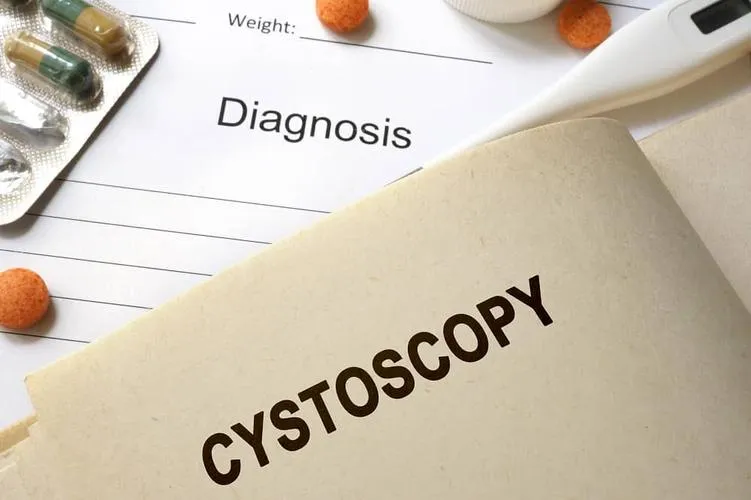Things to expect before going into a cystoscopy procedure
October 4, 2022
What is cystoscopy?
Cystoscopy is a procedure during which a urologist examines the inside of the urethra and bladder using a cystoscope. Cystoscopy is performed to diagnose and cure urinary tract problems including enlarged prostates, bladder cancer, urinary tract infections, and bladder control issues.
Cystoscopy is performed by using a pencil-sized tube embedded with a light and camera, named cystoscope.
Who may require a cystoscopy?
If you experience any of the following disorders, your healthcare provider may suggest that you undergo cystoscopy:
- Bladder stones
- Dysuria (painful urination)
- Frequent urinary tract infections (UTIs)
- Hematuria or blood in urine
- Bladder stones
- Bladder control problems include incontinence (unable to control the flow of urine) or urinary retention (unable to urinate completely).
Why do you need cystoscopy?
Through cystoscopy, urologists can diagnose the potential urinary tract problems and the ways to treat them. Here is a list of all possible urinary tract problems a cystoscopy can diagnose:
- Urethral cancer
- Enlarged prostate or benign prostatic hyperplasia
- Urinary tract infections
- Bladder stones
- Bladder cancer
- Bladder control issues
- Urinary fistulas and urethral strictures
What can you expect before undergoing a cystoscopy?
You may have to undergo certain tests before undergoing a cystoscopy procedure. A simple cystoscopy takes about 15 to 30 minutes.
Here is the list of things to expect before going into a cystoscopy procedure:
Emptying your bladder:
You will have to empty your bladder before undergoing a cystoscopy procedure. After that, you will be asked to lie on your back on a table in a position where your feet are in stirrups and your knees are bent.
Anaesthetic or Sedative:
After that, you may be given an anaesthetic or sedative, it is not a mandatory process, and sometimes this part is skipped. If you are given a sedative or anaesthetic, you will feel sleepy, but you'll still be aware. After this, the urologist will prepare to insert the cystoscope by applying a numbing ointment or jelly to prevent pain during the insertion of the cystoscope. After applying the numbing jelly, the urologist waits for some time and then the cystoscope is pushed into the urethra. Your doctor may ask you to avoid eating or drinking for a few hours before getting anaesthesia.
Examination of bladder and urethra:
Once the cystoscope is inserted into the urethra, the urologist examines the bladder and the urethra.
The end of the cystoscope is embedded with a lens that works like a microscope and magnifies the internal components of the urethra and bladder. The lens will magnify the inside of the bladder and the urethra, and project it onto a video screen. Then the bladder is filled with a sterile solution for better visualisation and examination. This filling of the sterile solution may make you want to urinate. After that, tissue samples are taken for lab testing.
Things to expect after the cystoscopy procedure:
You may feel pain or a burning sensation while urinating for the first few days, you might also feel belly pain. In some cases, one can expect blood-tinged urine. And you will feel like urinating frequently.
Conclusion:
A cystoscopy is a relatively quick and simple process, it helps diagnose problems related to the bladder or the urethra. After cystoscopy, a person can get back to their daily routine on the same day. However, in some cases, people who are given sedatives may require a day to recover. During cystoscopy, a person may experience some kind of discomfort. However, this process has a low risk of post-procedure complications, but if someone experiences them, they should consult their healthcare provider.
Request an appointment at Apollo Spectra Hospitals, Call 18605002244
Although cystoscopy is a less risky process, there are certain complications one may experience including urethral trauma or narrowing, urethral scarring, spasms, perforation, urine leakage, urinary tract problems or painful cramps.
Your healthcare provider may prescribe antibiotics to prevent the potential risk.
Some of the home remedies to prevent complications due to cystoscopy are: drinking sufficient water, applying warm cloth on the urethral opening, warm bath, and taking some painkillers such as nonsteroidal anti-inflammatory drugs (NSAIDs) to slow down the pain.
NOTICE BOARD
CONTACT US
CONTACT US
 Book Appointment
Book Appointment


.svg)
.svg)
.svg)
.svg)








